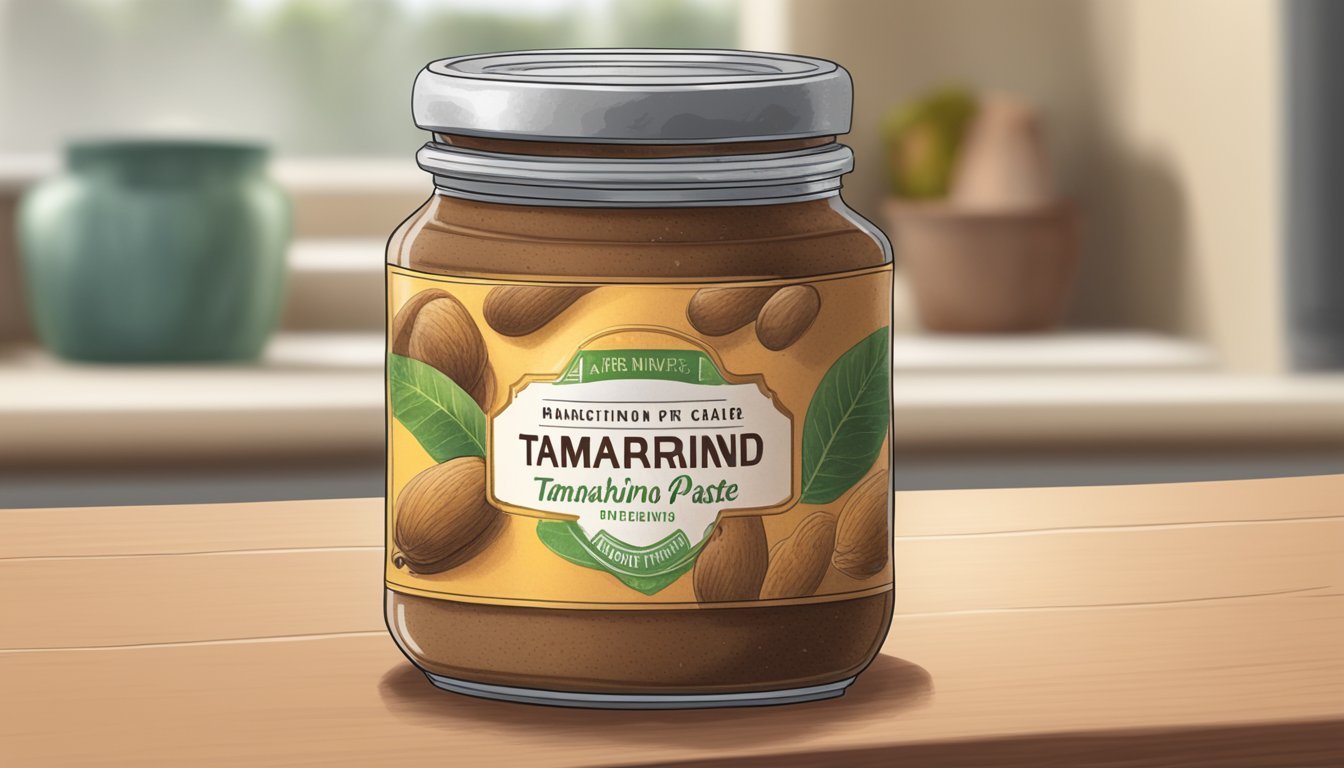Does Tamarind Paste Go Bad?
Understanding Shelf Life and Storage Tips
Tamarind paste is a common ingredient in many cuisines around the world, particularly in Asian dishes where it imparts a distinct sour and slightly sweet flavor. Being a natural product, tamarind paste does have a shelf life and can go bad over time. The longevity of tamarind paste depends on its storage conditions, and it's essential for consumers to know how to properly store it to extend its usability.
When it comes to identifying if tamarind paste has spoiled, there are a few indicators to look for. Visual changes such as mold growth or significant color alterations can signify that the paste is no longer safe to consume. Additionally, any off-putting odors are a clear indication that the tamarind paste has gone bad. Proper storage methods, such as refrigeration or freezing, can significantly slow down the degradation process, allowing enthusiasts to keep their tamarind paste fresher for longer periods.
The paste can be kept at room temperature for a short period post-purchase; however, refrigeration is recommended for extending its shelf life. Freezing tamarind paste can further prolong its freshness and usability, especially when pre-portioned into ice cube trays for convenience. Consumers should always check for the integrity of the paste before using it in recipes to ensure the best flavor and to maintain food safety standards.
Understanding Tamarind Paste
Tamarind paste is a culinary ingredient known for its unique tangy flavor and versatility in various cuisines. Its nutritional profile offers several health benefits, anchored by its content of fiber, antioxidants, and vitamins.
Origin and Usage
Tamarind is a fruit pulp derived from the pods of the tamarind tree, native to Africa and extensively used across India and Mexico. It's an integral component in a plethora of dishes, ranging from desserts to savory sauces. The unmistakable tangy taste of tamarind makes it a popular choice for flavoring beverages, chutneys, and curries. It serves as a common substitute for lemon juice in recipes, adds acidity to Mexican cuisine, and is essential in creating the authentic taste of pad thai sauce. Its ability to tenderize meat also makes tamarind paste a favored ingredient in marinades.
Nutritional Profile
The nutritional value of tamarind paste is noteworthy due to its high fiber content, which is beneficial for digestive health. It's a good source of antioxidants, which help protect the body against free radicals. The vitamins present in tamarind, such as Vitamin C, are essential for maintaining overall health. In addition to its role in flavoring dishes, the health benefits of tamarind paste make it a valuable addition to a balanced diet.
Storing Tamarind Paste
Proper storage of tamarind paste is crucial for maintaining its freshness and extending its shelf life. There are distinct methods for short-term and long-term storage.
Short-Term Storage
For short-term storage, tamarind paste should be kept in an airtight container to stave off moisture and contaminants. After opening, it’s best to refrigerate the tamarind paste to slow down spoilage. Ideally, the paste should be placed in a jar or plastic container and refrigerated, where it can remain fresh for several weeks to a few months. Refrigeration not only extends the shelf life but also maintains the quality of the paste.
Long-Term Storage
For extending the shelf life up to a year or more, freezing the tamarind paste can be an effective method. One should transfer the paste to a freezer-safe container or portion it into ice cube trays for easy use. Once frozen, the cubes can be stored in a sealed bag to prevent freezer burn. When storing in the freezer, ensure it's kept at a consistent temperature to prevent thawing and refreezing, which can degrade the paste's quality. Storing tamarind paste in the freezer prevents the growth of mold, which is a sign that the paste has gone bad. Frozen tamarind paste can be thawed in the refrigerator overnight before use.
Determining Freshness and Spoilage
Tamarind paste freshness and spoilage can be determined by sensory evaluation and storage practices. Specific signs guide consumers in identifying whether tamarind paste is fresh or has spoiled.
Signs of Freshness
Fresh tamarind paste should exhibit a smooth, thick consistency and retain its natural dark brown color. The scent should be tangy and sweet, characteristic of fresh tamarind. When tasted, it should provide a balance of sour and sweet flavors inherent to fresh tamarind paste.
Color: Natural dark brown
Texture: Smooth and thick
Smell: Tangy and sweet
Taste: Balanced sour and sweet
Spoilage Indicators
Spoilage of tamarind paste is primarily detected through changes in taste, texture, smell, and color. A sour or off smell, a noticeable change in texture to either a liquid or hardened state, and discoloration are clear indicators that tamarind paste has gone bad. The presence of mold, which is rare, would also be an indication of spoilage. Tamarind paste typically lacks preservatives, so its shelf life is finite, especially if it's homemade. It's crucial to note the expiration date, as using paste beyond this point could lead to spoilage, albeit sealed commercial paste can last beyond this date if stored properly.
Texture: Hardened or liquefied
Smell: Sour or off
Color: Discolored
Taste: Sour or altered drastically from original taste
Refrigeration can extend the shelf life of tamarind paste, but one should always inspect the paste for signs of spoilage before use, regardless of storage methods.
Making Homemade Tamarind Paste
Creating homemade tamarind paste ensures a fresh and potent flavor. The cook can control the ingredients and consistency, making the paste suitable for various culinary applications, from enhancing the complexity of Worcestershire sauce to being a base ingredient for syrups.
Ingredients and Equipment
Ingredients:
Tamarind pods, or alternatively, tamarind pulp (if pods not available)
Water (for dilution and boiling)
Optional: sugar or an alternative sweetener to taste
Equipment:
A large bowl for soaking
Boiling pot for heating water
Colander or sieve
Spoon or spatula for stirring and pressing
Jar or container for storing
Preparation Steps
Extracting the Pulp: Begin by peeling away the outer husk of the whole tamarind pods to reveal the sticky, date-like pulp. This pulp contains seeds and stringy fibers that will need to be removed.
Boiling Water: Boil an adequate amount of water. The water should be enough to fully submerge the tamarind pulp, allowing it to soak and soften.
Soaking: Place the tamarind pulp in the large bowl and pour the boiling water over it. Allow the tamarind to soak for approximately 30 minutes, or until it is soft enough to break apart easily.
Separating the Seeds and Fibers: After soaking, use your hands or a utensil to mash the pulp, helping separate it from the seeds and fibers. Then place the mixture in a colander or sieve.
Pressing the Paste: Press the softened pulp through the sieve with a spoon or spatula. This will separate the fibrous material and seeds from the paste. The process should result in a smooth tamarind concentrate.
Storing: If adding sugar or other sweeteners, it should be mixed into the tamarind paste at this step. The homemade tamarind paste can be stored in a jar or airtight container. Refrigeration extends its shelf life, helping preserve its tartness and prevent spoilage. Adding a layer of oil on top can also aid in preserving the paste.
Homemade tamarind paste can replace store-bought paste or tamarind concentrate in recipes. Its natural tartness, due to the presence of tartaric acid, is a key attribute, comparable to lemon or vinegar, and can be balanced with sugar to create a desired sweetness level. Additionally, its naturally occurring pectin helps thicken sauces, much like molasses or caramel.
Using Tamarind Paste in Cooking
Tamarind paste is a versatile ingredient that enhances flavor and adds a distinctive tang to a variety of dishes, from marinades to desserts. Its use is deep-rooted in many cultural cooking traditions across the globe.
Culinary Applications
Tamarind paste is primarily known for its sour and slightly sweet flavor profile, which makes it a popular additive in cooking. It is often used in sauces, such as the iconic Pad Thai sauce, and lends a complex acidity to marinades which can tenderize meats and infuse them with flavor. In desserts, tamarind paste imparts a unique tartness that can balance the sweetness, it's often used in items like tamarind pie. Due to its fiber content, it is also considered beneficial for digestion.
The concentrated form of tamarind can be diluted to use in various beverages like the refreshing agua fresca de tamarindo. Chefs also incorporate tamarind into dressings for salads to add a zesty note. In Pakistani cuisine, it’s not uncommon to find tamarind in spiced curries, contributing to their signature tang. The paste is sometimes sold in a compressed block form that can be rehydrated and used in preparing meals.
Recipe Inspirations
Curry: Mix tamarind paste into curry dishes for an acidic punch that complements rich, savory flavors.
Marinade: Use tamarind as the acidic base in marinades, combining it with spices and oil to marinate meats.
Desserts: Swirl tamarind paste into batters or doughs to create tangy desserts, with tamarind pie as a classic example.
Beverages: For a tangy twist, add tamarind paste to sweetened drinks, creating thirst-quenching beverages such as agua fresca de tamarindo.
Sauces and Dressings: Elevate sauces and dressings by introducing the complex tang of tamarind paste, making everyday dishes more exotic.
Tamarind paste's versatility extends to traditional and contemporary culinary practices, making it a pantry staple in many food cultures.
Purchasing and Handling
When purchasing tamarind paste, it's crucial to consider its shelf life and the conditions it has been stored in. Equally important are the safe handling practices that ensure the product remains fresh and safe to consume.
Buying Guide
Purchasing tamarind paste, typically available at grocery stores and international markets, requires attention to packaging and expiration dates. Buyers should look for jars or plastic containers that are sealed well and show no signs of damage. It’s advisable to check the expiration or best-by date on the container to gauge its freshness. Opting for tamarind powder can be an alternative, but it should also be within its best-by date and well-packaged.
Packaging: Choose sealed, undamaged containers.
Expiration Date: Verify the best-by date for freshness.
Safe Handling Practices
Once purchased, storing tamarind paste correctly is key to maintaining its flavor and extending its shelf life. It should never be stored on the counter for extended periods once opened, as exposure to air and moisture can lead to spoilage. Instead, one should transfer the paste to an airtight container if it is not already in one. Refrigerating the tamarind paste can significantly extend its shelf life—from six months to a year. For long-term storage, the paste can also be frozen.
Store: Refrigerate in an airtight container after opening.
Transfer: If not in a plastic container, move to one that is airtight.
Freeze: For extended shelf life, freezing is viable.
Health and Nutrition
Tamarind paste offers notable health benefits due to its rich nutritional profile, while some individuals may need to consider possible contraindications.
Dietary Benefits
Tamarind paste is valued for its high antioxidant content, which includes procyanidins that can support bodily functions and potentially protect against certain diseases. It is also a good source of vitamins, specifically B vitamins such as thiamine and folate, although it does not contain vitamin B12. The presence of dietary fiber in tamarind can aid digestion and contribute to cardiovascular health. Furthermore, tamarind contains tartaric acid, lending it a tangy flavor and acting as a powerful antioxidant. In terms of medicinal use, tamarind has been recognized for its soothing effects on indigestion and nausea and may have positive implications for liver health.
Antioxidants: Protect cells against free radical damage.
Vitamins: Support metabolic processes and maintain cell health.
Fiber: Enhances digestive health and may lower heart disease risks.
Possible Contraindications
While tamarind is generally safe for consumption, individuals with certain health conditions should exercise caution. For example, due to its tart and acidic nature, those with gastrointestinal issues might find that tamarind exacerbates their symptoms. Also, those with allergies to the ingredient should obviously avoid it. No significant link between tamarind paste and rust is known in a dietary context.
Acidity: May cause discomfort for sensitive digestive systems.
Allergies: Individuals with a known allergy need to abstain from consuming tamarind products.
Alternatives and Substitutes
When tamarind paste is unavailable or has spoiled, understanding effective substitutes can keep the intended flavor profile and consistency of a dish intact. Replacements are chosen based on their ability to mimic the unique sourness and sweetness of tamarind.
Tamarind Replacement Options
Worcestershire Sauce: This sauce can replace tamarind paste in a 1:1 ratio due to its complex flavor profile that includes both sourness and sweetness.
Lime Juice and Brown Sugar: Combining lime juice with brown sugar can be used to match tamarind paste's tartness and sweetness.
Amchur Powder: Derived from dried unripe mangoes, amchur powder provides a sour and fruity flavor similar to tamarind.
Vinegars and Sugars:
Rice Vinegar: Alone it adds tanginess, and when paired with brown sugar, the sweetness aspect is covered.
Apple Cider Vinegar: Gives a similar acidity level to tamarind with a hint of sweetness.
Adjusting Recipes Without Tamarind
When adjusting recipes without tamarind, consider the dish’s desired balance of sourness and sweetness. To compensate for tamarind's consistency:
Mixture Proportions: In sauces or glazes, start with less liquid substitutes and adjust according to the thickness of the mixture, adding more to achieve the right consistency.
Sugar and Molasses: A combination of sugar and molasses can replicate the sweetness and body of tamarind concentrate.
Balancing Flavors: If a substitute leans too heavily on sourness, like vinegar, balance it with additional sugar. Conversely, if too sweet, add more of a sour component.
Frequently Asked Questions
This section addresses common concerns regarding the longevity and optimal storage methods for tamarind paste, as well as its use in cooking to maintain its distinct flavor.
Preservation Queries
When it comes to storing tamarind paste, there are several strategies to extend its shelf life. An unopened jar of tamarind paste kept in a cool, dark place can last for up to a year past its best-by date, although its flavor may degrade over time. Upon opening, the paste should be placed in an airtight container and refrigerated to preserve freshness. Properly stored this way, it can remain good for 6 to 12 months.
For those looking to preserve tamarind paste for an even longer period, freezing serves as an excellent option. In a freezer-safe container or bag, tamarind paste can retain its qualities well beyond the expiration date. However, it's crucial to ensure that the container is sealed correctly to prevent freezer burn that could affect the taste and quality of the paste.
Cooking Tips
Incorporating tamarind paste into recipes ensures a burst of flavor that is vital in many dishes, from sauces to desserts. Since the quality of the paste can influence the resulting taste of meals, one should always assess the consistency, acidity, and sweetness of tamarind paste before using it in cooking. For a harmonious flavor profile in cooking, consider its potency; tamarind paste can be very concentrated, and a little often goes a long way.
If by chance the paste has thickened excessively during storage, it might require thinning with a bit of water. Additionally, if preparing recipes that demand tamarind paste but it's unavailable or has gone bad, suitable substitutes include a mix of apricots, dates, and lime juice to approximate the sweet and tart character of tamarind.







